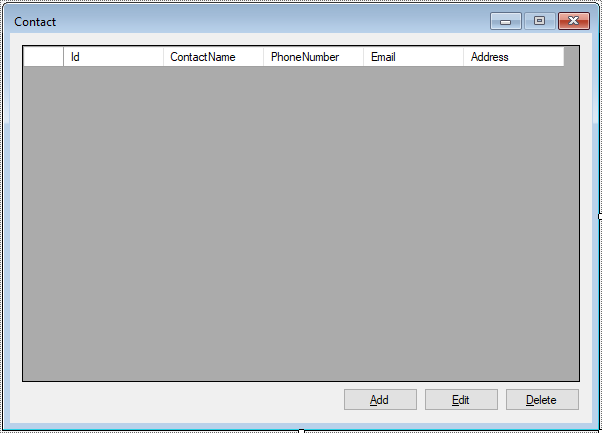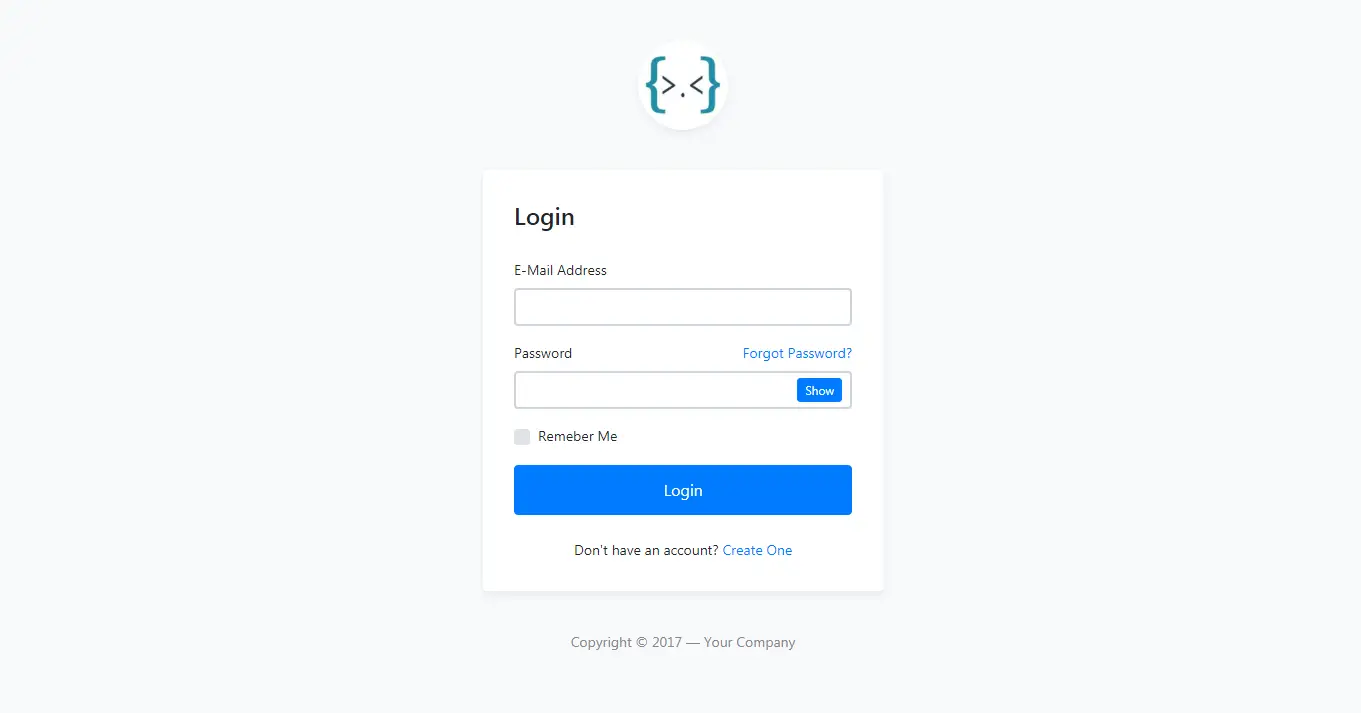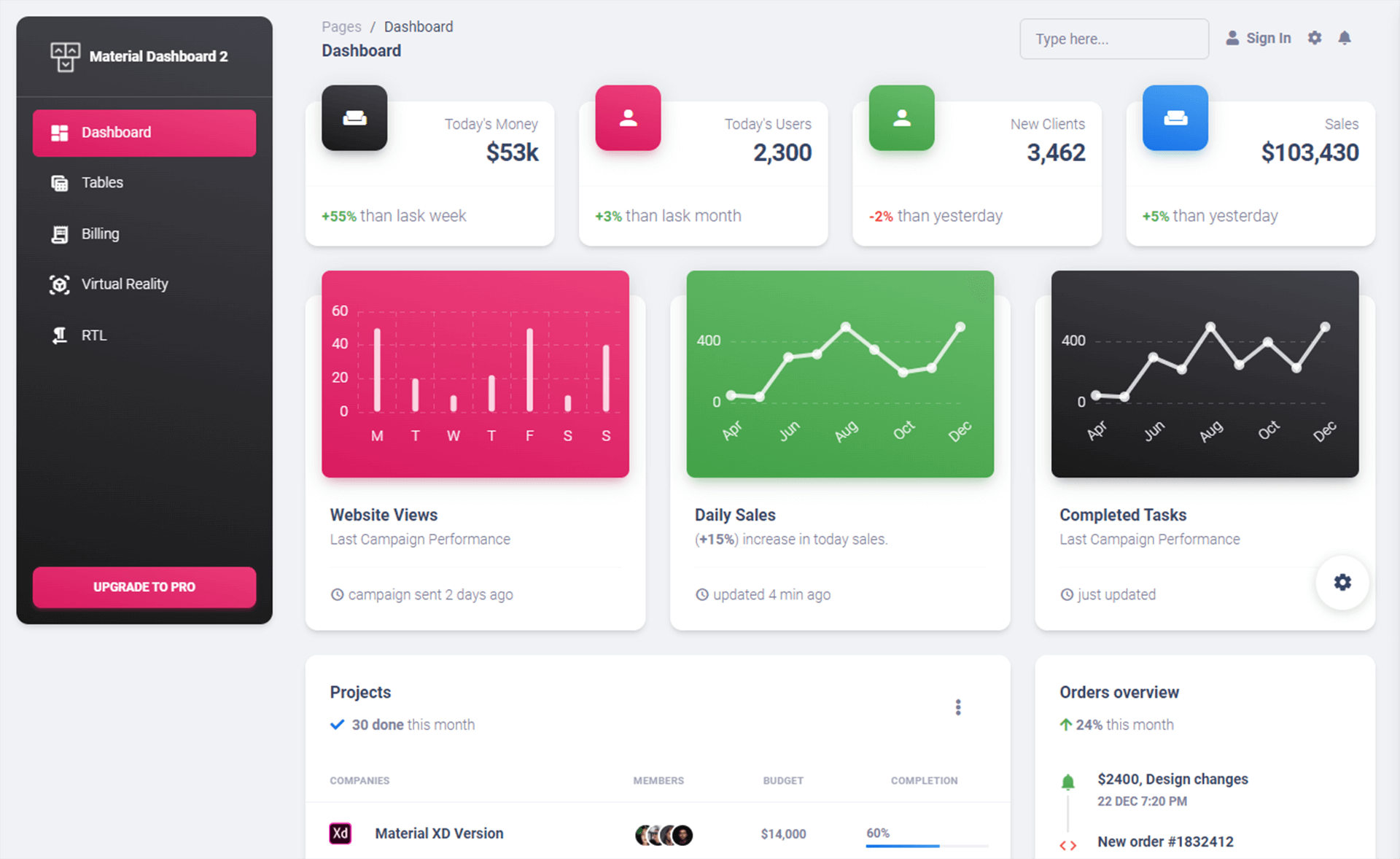How to Insert Update Delete Select in SQL Server in C#
By Tan Lee Published on Jun 25, 2017 6.75K
In this article, we'll create a Contact Management Application using C#, Entity Framework (EF) Database First, and Windows Forms (WinForms). This application will manage a Contact table in a database and provide CRUD (Create, Read, Update, Delete) operations.
How to Insert Update Delete Select in SQL Server in C#?
Open Visual Studio, then click New Project, then select Visual C# on the left, then Windows and then select Windows Forms Application. Name your project "EFCRUD" and then click OK
Design your form as shown below.
Create Form1 (Main Form)
Name your main form: Form1

Add a DataGridView control named contactDataGridView to display contacts.
Add buttons for Add, Edit, and Delete operations (btnAdd, btnEdit, and btnDelete respectively).
Create frmAddEditContact (Add/Edit Form)
Name your detail form: frmAddEditContact

Add TextBox controls for Contact Name, Phone Number, Email, and Address.
Add OK and Cancel buttons.
First, create the Contact table in your SQL Server database with the following structure.
CREATE TABLE Contacts (
Id INT PRIMARY KEY IDENTITY(1,1),
ContactName NVARCHAR(100) NOT NULL,
PhoneNumber NVARCHAR(20),
Email NVARCHAR(100),
Address NVARCHAR(255)
)Right-click on your project in the Solution Explorer, then select Add > New Item > ADO.NET Entity Data Model.
Choose EF Designer from Database, then connect to your database and select the Contacts table.
Complete the wizard. This generates the ContactEntities DbContext and a Contact entity class.
Form1 (Main Form)
The main form (Form1) is responsible for loading and displaying contacts, as well as handling add, edit, and delete actions.
using System;
using System.Collections.Generic;
using System.ComponentModel;
using System.Data;
using System.Drawing;
using System.Linq;
using System.Text;
using System.Threading.Tasks;
using System.Windows.Forms;
namespace EFCRUD
{
public partial class Form1 : Form
{
ContactEntities db;
public Form1()
{
InitializeComponent();
}
private void Form1_Load(object sender, EventArgs e)
{
// Load contact data from the database
db = new ContactEntities();
contactBindingSource.DataSource = db.Contacts.ToList();
}
private void btnAdd_Click(object sender, EventArgs e)
{
//Open form to add a contact
using(frmAddEditContact frm = new frmAddEditContact(null))
{
if (frm.ShowDialog() == DialogResult.OK)
contactBindingSource.DataSource = db.Contacts.ToList();
}
}
private void btnEdit_Click(object sender, EventArgs e)
{
if (contactBindingSource.Current == null)
return;
using (frmAddEditContact frm = new frmAddEditContact(contactBindingSource.Current as Contact))
{
if (frm.ShowDialog() == DialogResult.OK)
contactBindingSource.DataSource = db.Contacts.ToList();
}
}
private void btnDelete_Click(object sender, EventArgs e)
{
if (contactBindingSource.Current != null)
{
if(MessageBox.Show("Are you sure want to delete this record ?", "Message", MessageBoxButtons.YesNo, MessageBoxIcon.Question) == DialogResult.Yes)
{
//Delete contact
db.Contacts.Remove(contactBindingSource.Current as Contact);
contactBindingSource.RemoveCurrent();
db.SaveChanges();
}
}
}
}
}frmAddEditContact (Add/Edit Form)
This form allows users to add or edit a contact.
using System;
using System.Collections.Generic;
using System.ComponentModel;
using System.Data;
using System.Drawing;
using System.Linq;
using System.Text;
using System.Threading.Tasks;
using System.Windows.Forms;
namespace EFCRUD
{
public partial class frmAddEditContact : Form
{
ContactEntities db;
public frmAddEditContact(Contact obj)
{
InitializeComponent();
db = new ContactEntities();
if (obj == null)
{
// Add new contact
contactBindingSource.DataSource = new Contact();
//Add contact to model, allow insert
db.Contacts.Add(contactBindingSource.Current as Contact);
}
else
{
contactBindingSource.DataSource = obj;
// Edit existing contact
db.Contacts.Attach(contactBindingSource.Current as Contact);
}
}
private void frmAddEditContact_FormClosing(object sender, FormClosingEventArgs e)
{
if (DialogResult == DialogResult.OK)
{
// Validate contact name
if (string.IsNullOrEmpty(txtContactName.Text))
{
MessageBox.Show("Please enter your contact name.", "Message", MessageBoxButtons.OK, MessageBoxIcon.Information);
txtContactName.Focus();
e.Cancel = true;
return;
}
db.SaveChanges();
e.Cancel = false;
}
e.Cancel = false;
}
}
}When the application starts, the contacts are loaded into the DataGridView.
Add Contact: Opens frmAddEditContact with empty fields. After saving, the new contact appears in the DataGridView.
Edit Contact: Opens frmAddEditContact with the selected contact’s details pre-filled. Changes are saved after editing.
Delete Contact: Prompts for confirmation before deleting the selected contact.
VIDEO TUTORIAL
- How to Insert Update Delete View and Search data from SQL Server in C#
- How to Insert Update Delete data in Database from DataGridView in C#
- How to Insert Update Delete View data in SQL Server using 3 Tiers in C#
- How to Insert Update Delete Search data from local database in C#
- How to Insert Update Delete View and Search data from MS Access in C#
- How to Insert Update Delete and View data from SQL Database using NPoco ORM in C#
- Insert Update Delete and View data from SQL Database using ORM Lite in C#
- How to Insert Update Delete Search Records in C#





